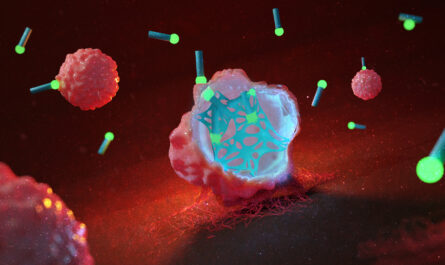Prostate cancer is the most common cancer among men and is the second most common cause of cancer-related deaths in Western countries. While drug therapy is often used to reduce the growth of prostate cancer, some cases become drug-resistant, leading to castration-resistant prostate cancer. In recent years, researchers have identified a subset of castration-resistant prostate cancer known as neuroendocrine prostate cancer, which is aggressive and typically fatal within a year of diagnosis.
Neuroendocrine prostate cancer cells differ from other prostate cancer cells in that they do not possess androgen receptors, making them difficult to target with current treatment options. However, a study conducted by the University of Eastern Finland has identified a potential new target in these cancer cells. The researchers found that a protein called DPYSL5 is highly expressed in neuroendocrine prostate cancer cells and could be a suitable target for drug therapy.
The research team collaborated with the University of British Columbia in Canada to verify the expression of the DPYSL5 protein in neuroendocrine prostate cancer patient tumor samples. They discovered that the protein is normally involved in the development of neurons in the brain and is not expressed in other parts of the body. However, when treated with antiandrogens, which are commonly used to treat prostate cancer, the prostate cancer cells started to express DPYSL5. This led to the cells acquiring stem cell-like and neuron-like properties observed in neuroendocrine prostate cancer cells.
Further analysis showed that DPYSL5 promotes cell transformation by activating the PRC2 complex, causing the cells to enter a stem cell-like state. It also induces the formation of extensions similar to those found in neurons, aiding in the invasion of surrounding tissue. However, when DPYSL5 was depleted, the PRC2 complex was inactivated, preventing the formation of neuron-like extensions and restoring the cells to a state where antiandrogen treatment was once again effective in preventing cell division.
These findings provide valuable insights into the development of new cancer drugs. The research team plans to use innovative imaging methods to screen drugs that inhibit the function of DPYSL5, offering hope for the treatment of drug-resistant neuroendocrine prostate cancer.
*Note:
1. Source: Coherent Market Insights, Public sources, Desk research
2. We have leveraged AI tools to mine information and compile it




